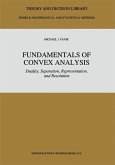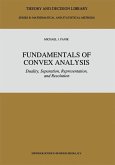Pairs of compact convex sets arise in the quasidifferential calculus of V.F. Demyanov and A.M. Rubinov as sub- and superdifferentials of quasidifferen tiable functions (see [26]) and in the formulas for the numerical evaluation of the Aumann-Integral which were recently introduced in a series of papers by R. Baier and F. Lempio (see [4], [5], [10] and [9]) and R. Baier and E.M. Farkhi [6], [7], [8]. In the field of combinatorial convexity G. Ewald et al. [36] used an interesting construction called virtual polytope, which can also be represented as a pair of polytopes for the calculation of the combinatorial Picard group of a fan. Since in all mentioned cases the pairs of compact con vex sets are not uniquely determined, minimal representations are of special to the existence of minimal pairs of compact importance. A problem related convex sets is the existence of reduced pairs of convex bodies, which has been studied by Chr. Bauer (see [14]).








